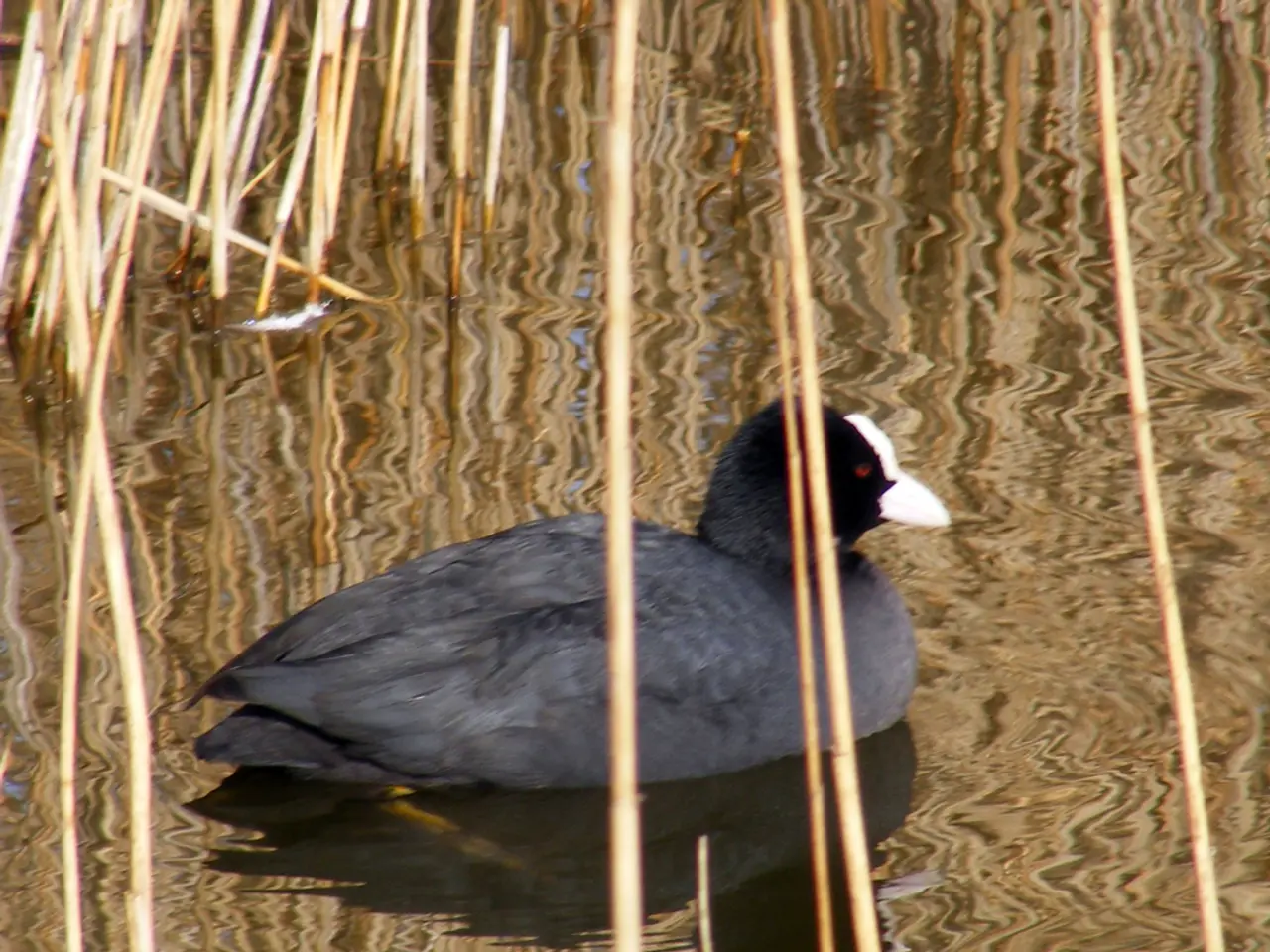Hemp Dogbane: Eradicating Dogbane Weeds: A Guide
Hemp dogbane, a perennial plant known scientifically as Apocynum cannabinum, is a significant agricultural pest, particularly in commercial garden regions. This invasive species is responsible for crop losses of up to 37% in soybean production, 32% in sorghum, and 15% in corn[1].
The plant is easily identifiable by its small whitish green flowers that become characteristic slender seed pods, which are reddish brown, sickle-shaped, and 4 to 8 inches long with slightly hairy, flat brown seeds inside[2]. Hemp dogbane has a deep taproot and creeping peripheral root system, enabling it to double in size in one season[3].
Effective methods for controlling and removing hemp dogbane in agricultural settings involve a combination of selective herbicide applications, cultural practices, and mechanical controls.
Herbicide Control
Selective herbicides such as dicamba, 2,4-D, fluroxypyr (Starane Ultra), and halosulfuron plus dicamba (Yukon) have demonstrated fair to good selective control of hemp dogbane in crops like sorghum and small grains when applied at the proper weed growth stage[1].
For soybeans, chemical control using glyphosate in Roundup Ready varieties is effective. In Xtend soybeans, dicamba, or 2,4-D choline in Enlist soybeans provide modest control. For conventional soybeans (no selective herbicides available), a targeted glyphosate weed-wiper can be used to exploit height differences[1].
In perennial forages such as alfalfa, glyphosate in Roundup Ready varieties is the most effective method since selective herbicides for alfalfa lack satisfactory efficacy on established hemp dogbane[1]. Fall applications of glyphosate or dicamba during fallow periods can also improve control by targeting perennial rootstocks[1][5].
Mechanical and Cultural Controls
Since hemp dogbane spreads by creeping rootstock (perennial growth) and seeds, timely removal of seedlings is important before perennial characteristics develop (which can start as early as 10 days old)[1]. Repeated tillage or mowing before seed pods mature can reduce seed spread but may be impractical in perennial forage systems. Maintaining competitive crop canopies reduces hemp dogbane establishment.
Toxicity and Importance of Control
Hemp dogbane contains potent cardiac glycosides and other toxins harmful to all grazing animals, causing weakness, paralysis, and potentially death within hours of ingestion. Therefore, control is particularly important in pasture and hay production areas to prevent livestock poisoning[4].
Herbicide Resistance
Currently, no herbicide resistance has been reported in hemp dogbane, but rotating herbicide modes of action is advised to mitigate resistance development[1].
In summary, combining selective herbicide applications (dicamba, 2,4-D, glyphosate-based products) with timely mechanical control and good crop management practices is the best strategy to manage hemp dogbane effectively in commercial agricultural gardens and crop fields[1][5]. Careful attention to herbicide choice depending on crop type is essential to ensure selective control without crop injury[1][5].
It's important to note that chemical control has the greatest chances of success on established stands of hemp dogbane, except in soybeans where there is no acceptable herbicide control[1]. To avoid using toxic chemicals to eradicate hemp dogbane, consult with a professional like your local university extension agent for alternative ways to defeat this weed[6].
Sources:
[1] University of Nebraska-Lincoln Extension. (2018). Hemp Dogbane Management. Retrieved from https://cropwatch.unl.edu/2018/hemp-dogbane-management
[2] University of Nebraska-Lincoln Extension. (n.d.). Hemp Dogbane. Retrieved from https://cropwatch.unl.edu/weed/hemp-dogbane
[3] University of Nebraska-Lincoln Extension. (2016). Hemp Dogbane. Retrieved from https://cropwatch.unl.edu/2016/hemp-dogbane
[4] University of Nebraska-Lincoln Extension. (2017). Hemp Dogbane. Retrieved from https://cropwatch.unl.edu/2017/hemp-dogbane
[5] University of Nebraska-Lincoln Extension. (2020). Hemp Dogbane. Retrieved from https://cropwatch.unl.edu/2020/hemp-dogbane
[6] University of Nebraska-Lincoln Extension. (2019). Hemp Dogbane. Retrieved from https://cropwatch.unl.edu/2019/hemp-dogbane
Adopting a comprehensive approach, the integration of selective herbicides like dicamba, 2,4-D, glyphosate-based products, and mechanical controls such as timely removal of seedlings can effectively manage hemp dogbane in home-and-garden settings, particularly in garden regions where it poses a threat to crops. This lifestyle adjustment is crucial to ensure the health of vegetation and prevent poisoning of livestock in pasture and hay production areas.






